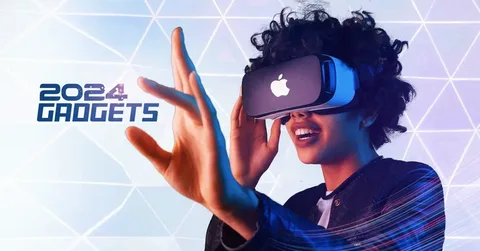
Blockchain technology has emerged as a revolutionary force in many industries, especially Blockchain Financial Security in the financial sector. Its ability to provide transparency, enhance security, and reduce fraud has made it an attractive solution for addressing the vulnerabilities in traditional financial systems. This article will explore how blockchain is improving financial security, focusing on its key features, benefits, and real-world applications.
Introduction to Blockchain Technology
Blockchain is a decentralized, distributed ledger technology that allows transactions to be recorded in a secure and transparent manner. Instead of relying on a central authority, such as a bank or government, blockchain systems distribute the record of transactions across a network of computers. Each transaction is stored in a “block,” and these blocks are linked together in chronological order, forming a “chain.”

Blockchain’s appeal in financial security lies in its ability to prevent tampering, ensure transparency, and enhance trust among participants in the financial system. This is particularly important in an era where cyberattacks and fraud are on the rise.
Key Features of Blockchain Technology
1. Decentralization
Decentralization is one of the fundamental characteristics of blockchain. Instead of being managed by a single central authority, blockchain distributes control across various nodes (computers) in its network. This eliminates the need for intermediaries, such as banks, making financial transactions more secure and efficient. The decentralization aspect ensures that no single entity has control over the entire system, reducing the risk of fraud or manipulation.
2. Transparency
Blockchain offers an unparalleled level of transparency. All transactions are visible to every participant in the network. This transparency increases trust among users and helps prevent unauthorized access or tampering. Since the information is shared across multiple nodes, any attempt to alter a transaction will be immediately noticed, enhancing the integrity of financial records.
3. Immutability
Once a block is added to the blockchain, it is nearly impossible to alter or delete. This immutability ensures that transactions, once verified, remain unchangeable, reducing the risk of fraud and enhancing financial security. In traditional systems, records can be tampered with or manipulated, leading to security breaches. Blockchain’s immutable nature guarantees that records remain accurate and trustworthy.
4. Cryptographic Security
Blockchain relies heavily on cryptographic techniques to secure transactions. Each transaction is encrypted using advanced algorithms, making it extremely difficult for hackers to access or alter sensitive financial data. Cryptography ensures that data remains secure and private, protecting users from theft or unauthorized access.
How Blockchain Enhances Financial Security
Blockchain has the potential to significantly enhance financial security by addressing some of the most pressing challenges in today’s financial systems. Here are the main ways it achieves this:
1. Reduction in Fraud
One of the primary benefits of blockchain is its ability to reduce fraud. In traditional systems, fraudsters can manipulate financial records, steal personal data, or even carry out unauthorized transactions. With blockchain, every transaction is recorded, encrypted, and verified by multiple parties, making it nearly impossible to alter the data without being detected.
Blockchain’s transparency and immutability ensure that fraud attempts are minimized. Since every transaction is public and cannot be changed once it is recorded, it becomes difficult for malicious actors to commit fraudulent activities.
2. Enhanced Transaction Security
Blockchain offers secure, encrypted transactions that are verified through a consensus mechanism. This decentralized verification process ensures that no single entity can manipulate the data. Moreover, the use of cryptographic techniques makes blockchain transactions highly secure, protecting users from potential cyberattacks.
Financial institutions, banks, and payment processors can greatly benefit from blockchain’s enhanced security measures, reducing the chances of data breaches and unauthorized transactions.
3. Prevention of Data Tampering
In a blockchain system, data tampering is nearly impossible due to the consensus mechanism that verifies each transaction. Any changes to a single transaction would require altering the entire blockchain across all nodes, which is extremely difficult. This feature protects sensitive financial data from being modified or tampered with, adding an extra layer of security to financial transactions.
4. Decreased Dependency on Intermediaries
Blockchain eliminates the need for intermediaries, such as banks or payment processors, to verify transactions. This not only speeds up the transaction process but also reduces the risk of potential security breaches. Since intermediaries can often be targeted by hackers, reducing their involvement enhances overall financial security.
Comparative Analysis: Traditional Financial Systems vs. Blockchain Financial Security
| Feature | Traditional Financial Systems | Blockchain Financial Systems |
|---|---|---|
| Centralization | Managed by centralized authorities like banks | Decentralized, no single point of control |
| Transparency | Limited transparency, with transactions visible only to certain entities | Full transparency, transactions visible to all participants |
| Fraud Prevention | Vulnerable to fraud, data manipulation, and breaches | Highly resistant to fraud due to immutability and consensus verification |
| Transaction Speed | Can be slow, especially for international transactions | Faster due to the absence of intermediaries |
| Immutability of Records | Can be altered or deleted by authorized personnel | Records are permanent and unchangeable once added |
| Cryptographic Security | Varies, dependent on the institution’s security systems | Strong cryptographic encryption for every transaction |
Applications of Blockchain in Financial Security
1. Cryptocurrency Transactions
Cryptocurrencies like Bitcoin and Ethereum rely on blockchain technology to secure transactions. These digital currencies offer a decentralized form of currency, providing users with secure and transparent transactions without relying on banks. As the use of cryptocurrencies grows, blockchain’s role in ensuring financial security will continue to expand.
2. Smart Contracts
Smart contracts are self-executing contracts with the terms directly written into code. Blockchain ensures that these contracts are automatically executed when certain conditions are met. This not only reduces the risk of fraud but also ensures that the terms of the contract are carried out without the need for intermediaries.
3. Identity Verification
Blockchain can also be used to enhance identity verification processes in financial institutions. By using a decentralized, tamper-proof ledger, banks and financial services can securely verify a person’s identity without relying on traditional, and often vulnerable, identification methods. This reduces the risk of identity theft and fraud.
4. Cross-Border Payments
Blockchain has the potential to revolutionize cross-border payments by providing faster, more secure, and cost-effective methods for transferring money internationally. Traditional cross-border payments involve multiple intermediaries, which increases the risk of fraud and slows down the process. Blockchain streamlines these transactions, enhancing both security and efficiency.
Challenges of Blockchain in Financial Security
Despite its many advantages, blockchain is not without challenges. Some of the key concerns include:
1. Scalability
Blockchain systems, especially public blockchains, can face scalability issues. As the number of transactions increases, the network can become congested, leading to slower processing times.
2. Regulatory Uncertainty
The regulatory landscape surrounding blockchain technology is still evolving. Many governments are unsure how to regulate blockchain and cryptocurrencies, creating uncertainty for businesses and consumers alike.
3. Energy Consumption
Blockchain networks, particularly those that rely on Proof of Work (PoW) consensus mechanisms, consume a significant amount of energy. This raises concerns about the environmental impact of blockchain technology.
Comparative Analysis of Blockchain Financial Security Features
| Blockchain Feature | Benefit to Financial Security | Challenge |
|---|---|---|
| Decentralization | Reduces risk of fraud and manipulation | Scalability issues in large networks |
| Transparency | Enhances trust and accountability | Privacy concerns in certain use cases |
| Immutability | Prevents tampering and ensures data integrity | Permanent errors or incorrect data may be difficult to correct |
| Cryptographic Security | Ensures secure, encrypted transactions | Vulnerabilities in cryptographic algorithms (though rare) |
| Reduction of Intermediaries | Increases transaction speed and reduces costs | Regulatory challenges and unclear legal framework |
Conclusion
Blockchain technology has the potential to significantly enhance financial security by reducing fraud, enhancing transaction security, and eliminating the need for intermediaries. Its decentralized, transparent, and immutable nature makes it an ideal solution for many of the challenges faced by traditional financial systems. However, there are also challenges, such as scalability, regulatory uncertainty, and energy consumption, that need to be addressed before blockchain can be fully integrated into the global financial ecosystem.
As blockchain technology continues to evolve, its role in securing financial systems will likely grow, making it a critical component of the future of finance.












































